“In my time, I’ve been accused of being afraid to go out into the world to take pictures, like a so-called ‘real’ photographer does,” Jeff Wall tells me, smiling. “And I’ve been accused of making art with a capital A – as if that, too, was a crime.”
Walking around his big, bright new exhibition at the Marian Goodman Gallery in London, it is hard to see why these suspicions of Wall’s elaborately staged images still linger, 37 years after they first went on show.
In 1978, he exhibited The Destroyed Room in the window of the Nova Gallery in his home town Vancouver. Inspired by Delacroix’s painting The Death of Sardanapalus (1827), it showed a spectacularly dishevelled bedroom that was like the scene of a violent row or a crime, with clothes scattered everywhere and the furniture, doors and walls destroyed. Back then, inspired by garishly backlit street adverts he saw at bus stops in Madrid while returning from the Prado, his colour transparencies were meticulously choreographed and mounted in vast light-boxes.
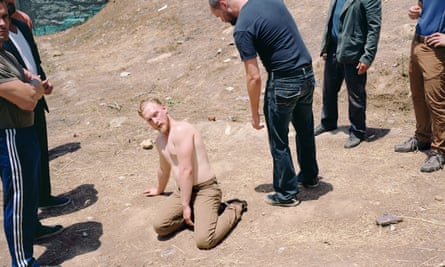
They mesmerised the art world and he became, alongside Cindy Sherman and later Andreas Gursky, one of the pioneers of conceptual photography. His photographs sold for ever more stellar prices – in 2012, his work Dead Troops Talk fetched $3,346,456 at Christie’s, New York, making it the third most expensive photograph ever sold at auction.
Wall describes his work as “cinematographic” re-creations of everyday moments he has witnessed, but did not photograph at the time. “To not photograph,” he says, “gives a certain freedom to then re-create or reshape what I saw.” He takes months to stage and direct each of his “occurrences”. Over the years, they have moved away from the dramatic towards the more quiet and quotidian and, since 2006, he has exhibited prints rather than back-lit transparencies.
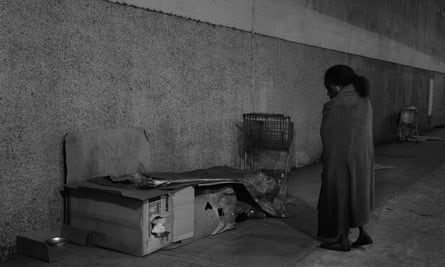
In his new show, you will search in vain for anything as spectacularly hyperreal as A Sudden Gust of Wind (After Hokusai) 1993, a huge digital collage in which four figures in a landscape respond to a sudden squall that bends trees and scatters a sheaf of papers though the air. Today, most of his images resemble reportage and, as such, are likely to incense his detractors, who claim he’s not a “true” photographer. His most contentious new work, called Approach, shows a homeless woman standing by a makeshift cardboard shelter in which we spy the foot of what could be a sleeping vagrant. Wall tells me it was shot under an actual freeway where the homeless congregate and that “it took a month to make, working hands-on” – but he won’t divulge just how staged it is. Is this an actual homeless woman, or an actor? Is the shelter real, or was it built by Wall’s team of assistants to resemble one? Re-creating images from memory is crucial to Wall’s practice – perhaps because it flies in the face of the tradition of photography as an act of instant witnessing.
“Something lingers in me until I have to remake it from memory to capture why it fascinates me,” he says. “Not photographing gives me imaginative freedom that is crucial to the making of art. That, in fact, is what art is about – the freedom to do what we want.”

Wall is a tall, dapper figure who speaks in a quiet but often oblique way about his images – as if not wanting to give too much away. And the images are as enigmatic as the man himself. Listener, 2015, shows a kneeling, shirtless man uttering something to the leader of a group of ominous-looking men who have gathered around him in a barren, harshly sunlit place. Even the stones on the ground seem menacing.
“This is rooted in reportage,” Wall explains. “It’s the kind of scenario you read about in the media quite frequently of late: someone taken captive by a group and put down on the ground. It does not bode well.”
Is it meant to be a political picture? “No, nor was it my intent to make the captive look like almost-cliched classical paintings of Jesus,” he replies. “But neither do I try to avoid those resonances. My work is to try and re-create the space in which this ominous event is occurring. My challenge is to photograph it properly.”
Wall, now 69, grew up in Vancouver, the son of a doctor and “a traditional 50s housewife”, both of whom encouraged him to be creative from an early age. “My parents were the kinds of people who subscribed to Book of the Month club, whereby regular people would receive important books by mail. Self-improvement was very much part of the times, and I was always interested in drawing and painting. I had a studio when I was 15 and I had gone through all the art books in Vancouver public library and was going to galleries on my own.”
At college in the mid-1960s, he studied painting and drawing, meticulously copying images from Robert Frank’s seminal photobook, The Americans, before he discovered conceptualism. In 1970, he had a single work in a group show of new conceptualism at MoMA, New York.
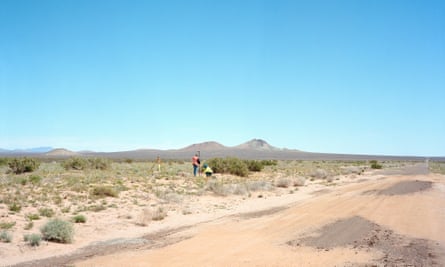
“It was a photography and text piece that I don’t like but that is still around,” he says, drily. That same year, he completed an MA on Berlin Dada and the Notion of Context, then moved to London to do postgraduate research on Manet, still a defining influence, at the Courtauld Institute. By then married with two children, he did not resume his art career until 1977, when he started making his signature large backlit photographs. “Like painting, my work is very much about composition. That is where the feeling flows – more so than in the expressions on faces or the possible social meanings. But I am not trying to imitate painting. In fact, my pictures are as close to Robert Frank or Paul Strand as they are to painting or cinema. But people seem to choose not to see that.”
He’s still troubled by his decision to turn from one to the other. “I still don’t know why I slithered away from painting to photography and I have never been able to figure that out,” he says. “It may just have been youthful stupidity or the fact that I was an over-confident and in-a-hurry adolescent in the late 1960s – when the possibilities of photography first registered with me. I was very restless in those days. If I had known then what I know now, I would have done it differently.”
For all his success, he sounds regretful. “Not regretful because I love photography and am still excited by it, but I’m still haunted by the idea that it was a misstep and all that followed has just been a big mistake.” A brilliant mistake, I reply, taken aback.
“I guess so,” he says, sounding unconvinced. Like his best photographs, Wall reveals just enough to keep you guessing.



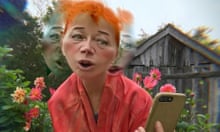
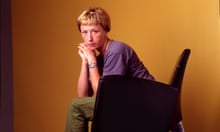
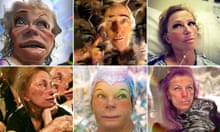
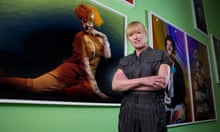
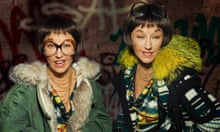

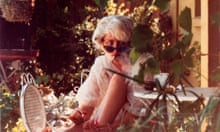

Comments (…)
Sign in or create your Guardian account to join the discussion